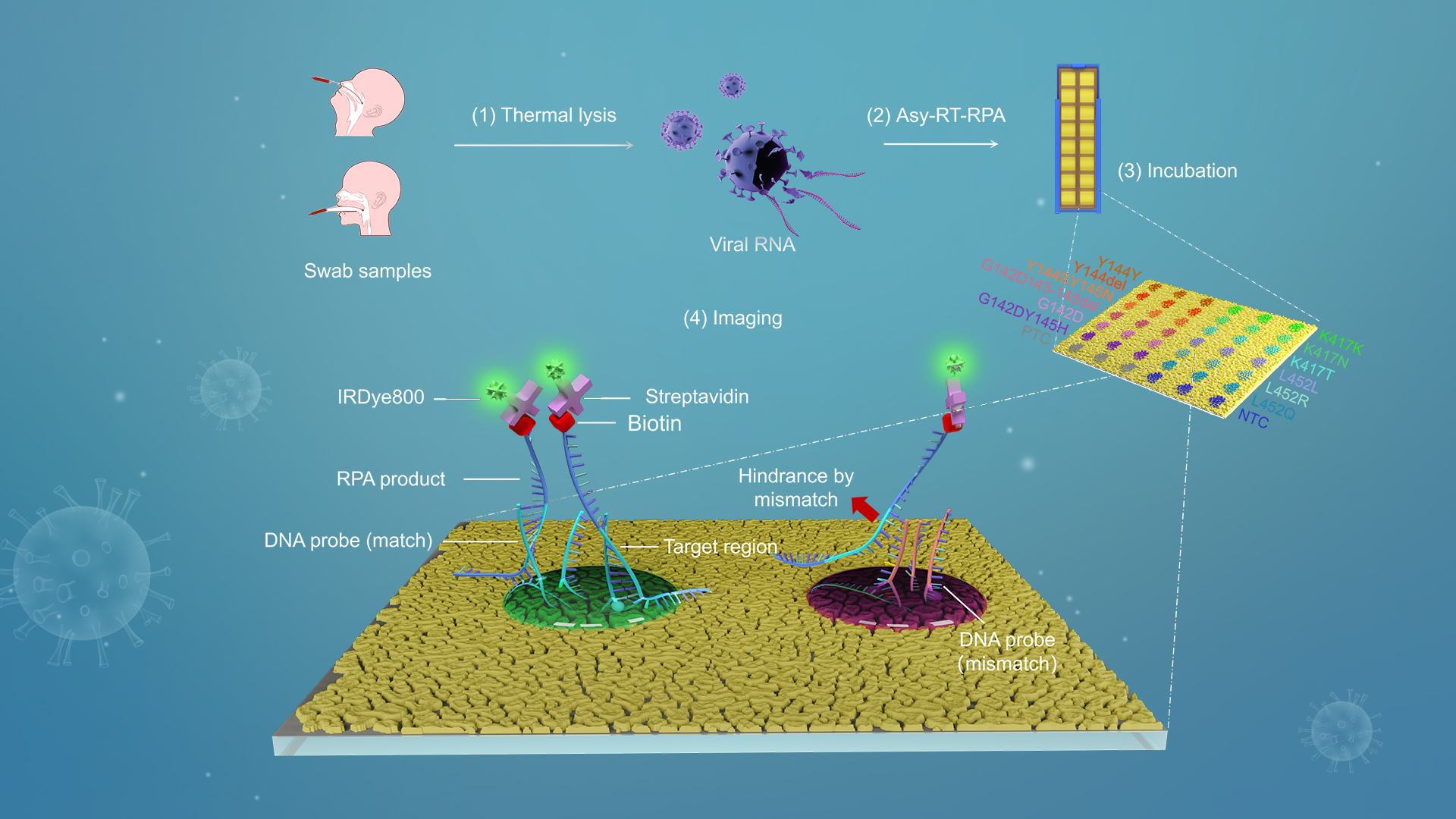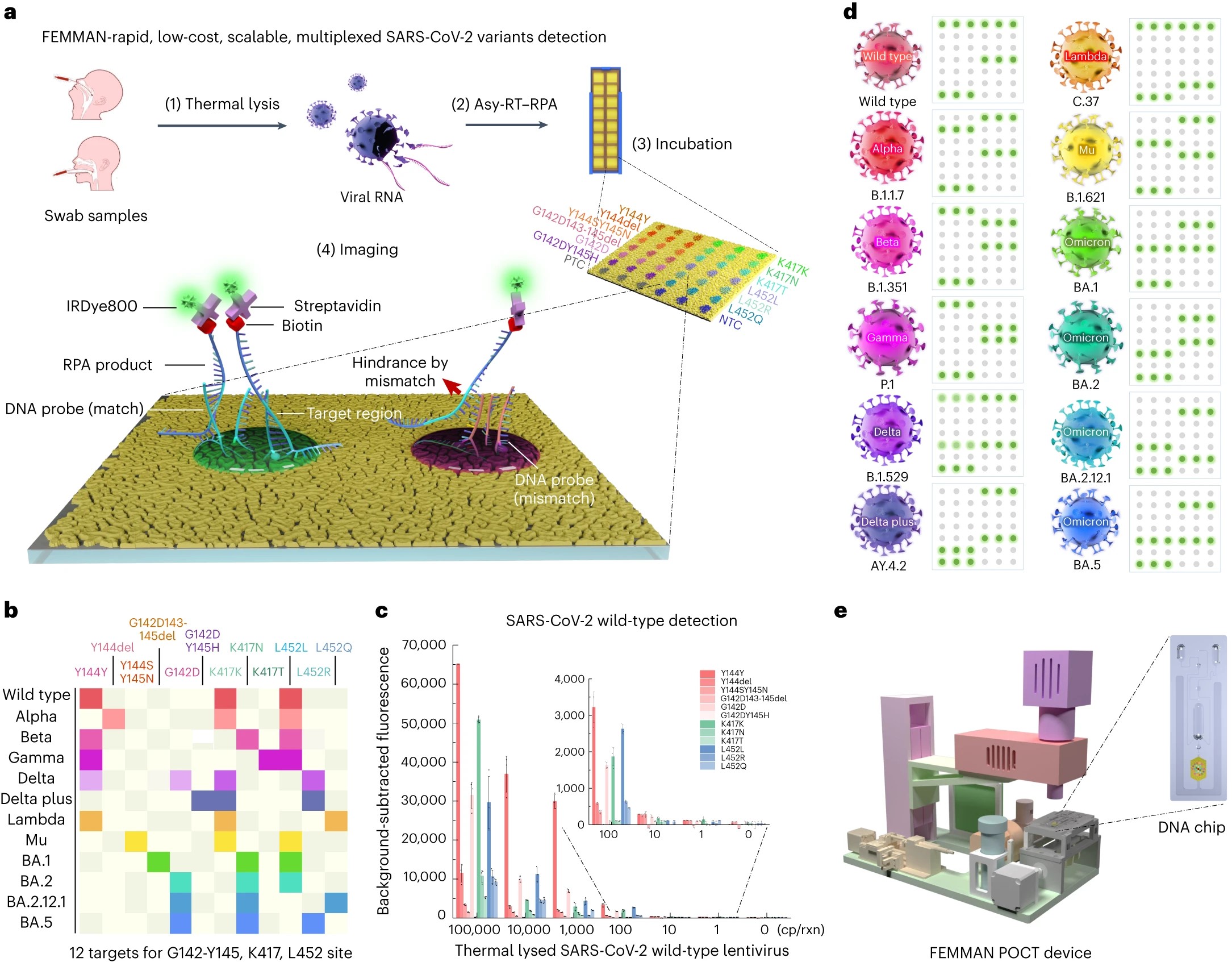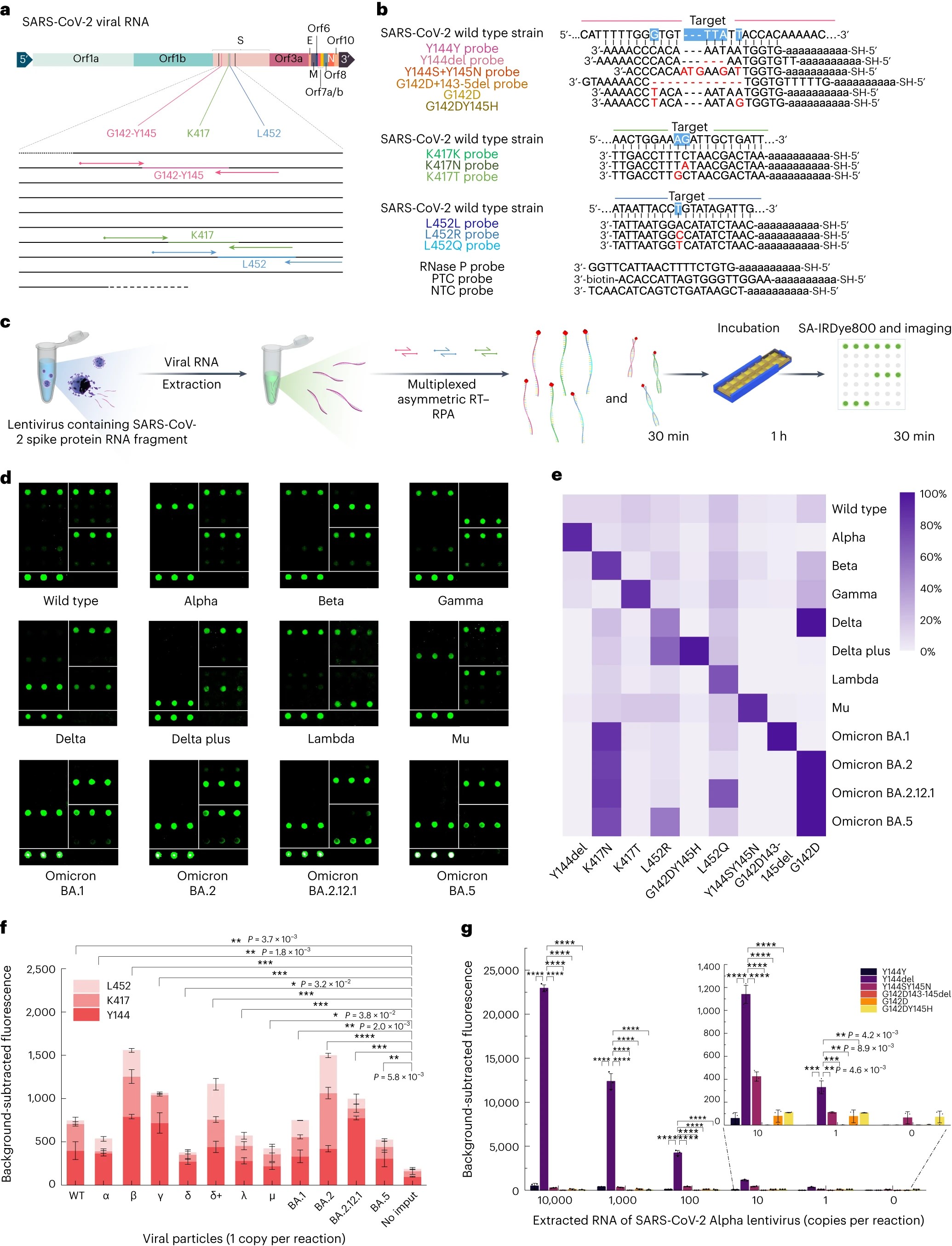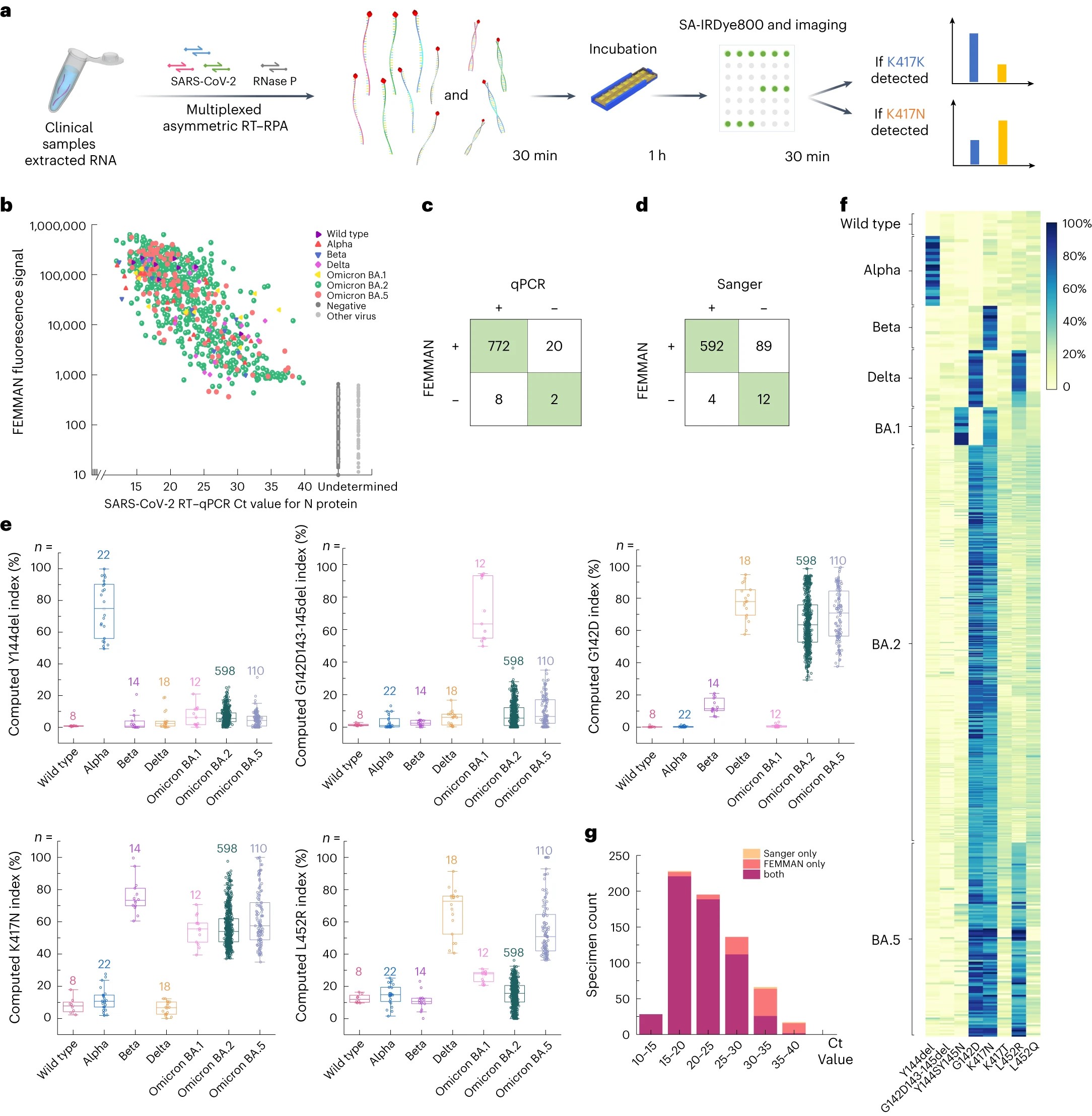The continuous mutations of the novel coronavirus (SARS-CoV-2) are complicating public health responses and vaccination strategies. Portable assays for the rapid identification of lineages of SARS-CoV-2 are needed to aid large-scale efforts in monitoring the evolution of the virus.
Virus mutations remain a significant challenge for both scientific research and public health, especially as the global pandemic continues to spread. Traditional detection methods, like RT-qPCR, have limitations in identifying multiple viral mutations. Given the rapid mutation of the coronavirus and the varying efficacy of vaccines against new variants, more precise detection techniques are critical.

In response to this urgent situation, Associate Professor Bo Zhang’s group from the Department of Biomedical Engineering (BME) at the Southern University of Science and Technology (SUSTech), in collaboration with Professor Hongjie Dai from Stanford University, Director Jing Yuan from the Third People’s Hospital of Shenzhen, the Microfluidic-Biomaterials Lab at SUSTech, and Dr. Meijie Tang from Nirmidas Biotech, have developed a novel SARS-CoV-2 variant detection technology called FEMMAN. This technology uses advanced methods combining nanotechnology and biosensors, allowing not just accurate detection but differentiation among dozens of different mutations.
Their research work, entitled “Multiplexed discrimination of SARS-CoV-2 variants via plasmonic-enhanced fluorescence in a portable and automated device”, has been published in the journal Nature Biomedical Engineering, offering a potential game-changer in the diagnosis and monitoring of COVID-19 variants.
FEMMAN Technology
FEMMAN integrates various cutting-edge technologies, such as plasmonic gold nanomaterials, DNA microarrays, and microfluidic chips, to successfully identify SARS-CoV-2 and its multiple variants with high sensitivity and specificity. The technology’s flexibility and accuracy make it a powerful tool for future pandemic control efforts. Moreover, FEMMAN can rapidly adapt to newly emerging virus variants, substantially enhancing the accuracy and efficiency of pandemic responses and helping in precise risk assessment and resource allocation worldwide.

Figure 1. FEMMAN achieves single-RNA copy sensitivity with Asy-RT–RPA for the detection of SARS-CoV-2 and the simultaneous discrimination of viral variants with SNV distinction
Unique Features
The unique feature of FEMMAN technology lies in its multiplex detection capabilities. Prof. Zhang’s team further optimized the technique to adapt to newly emerging virus variants. In essence, FEMMAN is not only a highly sensitive and specific detection tool but also a highly flexible and scalable platform for multiplex nucleic acid detection.

Figure 2. Comprehensive identification of SARS-CoV-2 lineages by FEMMAN
The breakthrough was made possible by interdisciplinary and inter-institutional collaborations. The project team solved multiple key scientific challenges by drawing upon their years of professional expertise. In collaboration with Director Jing Yuan’s team from the Third People’s Hospital of Shenzhen, thousands of clinical trials were conducted, allowing FEMMAN technology to move quickly from the lab to the clinic and to potentially be widely applied in various settings, including hospitals, airports, schools, and communities.

Figure 3. SARS-CoV-2 detection and viral-lineage discrimination of clinical samples with FEMMAN
Societal Impact
When asked about the social implications of the research, the first author of the paper, Dr. Ying Liu, said: “The emergence of FEMMAN technology gives us a much more robust weapon against the constant mutations of the novel coronavirus. This is particularly crucial as many regions globally face insufficient testing resources and immense pressures on healthcare systems.”
The scalability of FEMMAN technology also means it has broad application prospects. Aside from COVID-19, it could potentially be used to detect a variety of other viruses and microbes, including but not limited to influenza, Ebola, and Zika viruses.
Research Assistant Professor Ying Liu from the Department of BME at SUSTech is the first author of this paper. Yang Yang, Guanghui Wang, and Dou Wang are co-first authors. Associate Professor Bo Zhang from the Department of BME at SUSTech, Academician Hongjie Dai from Stanford University, Director Jing Yuan from the Third People’s Hospital of Shenzhen, and Dr. Meijie Tang from Nirmidas are the corresponding authors.
SUSTech is the primary institution for this research, and collaborating institutions include Stanford University, Third People’s Hospital of Shenzhen, Nirmidas Inc., and Guangzhou Medical University.
This work was supported by the National Natural Science Foundation of China, Guangdong Basic and Applied Basic Research Foundation, Shenzhen Science and Technology Programme Project, Guangdong Provincial Key Laboratory of Advanced Biomaterials, National Key R&D Program of China, National Science and Technology Major Project, and the Shenzhen High-Level Hospital Construction Fund. Technical support for this research was provided by the Core Research Facilities at SUSTech.
Paper link: https://www.nature.com/articles/s41551-023-01092-4